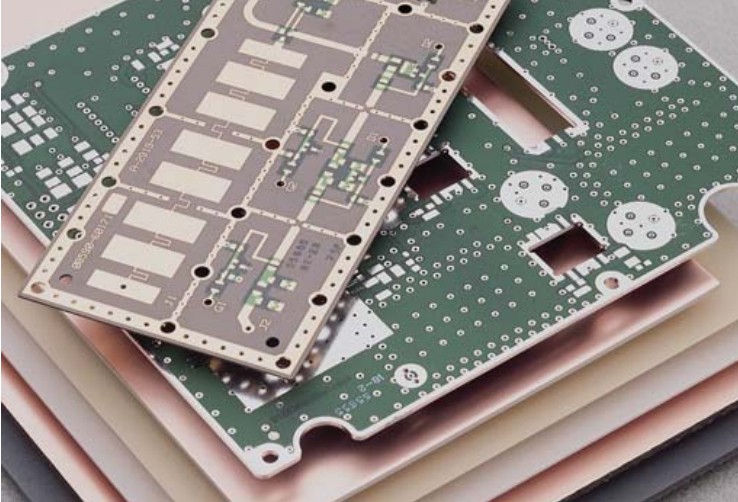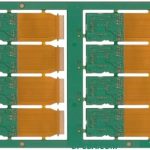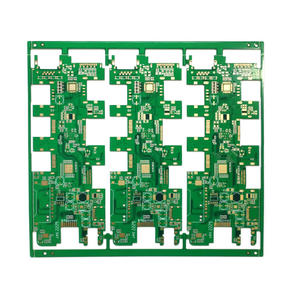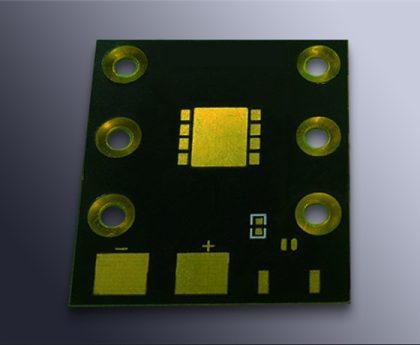Polytetrafluoroethylene is known as the “plastic king”, and polytetrafluoroethylene is known as the “plastic king”. Roy Planckett, the father of fluororesin, developed it at DuPont in the United States in 1936.
With the continuous development of 5G communication technology, the demand for high-frequency and low dielectric materials is also increasing. PTFE has excellent insulation and is not easily interfered by high-frequency radio waves. Fluoropolymers have good low dielectric properties and low loss factor under high-frequency conditions, and can provide Super high frequency and high-speed performance for data centers, signal transmitting towers and personal electronic equipment. Therefore, with the acceleration of 5G, the market demand for high-performance PTFE PCB is also constantly increasing.
1. As a low dielectric loss material
High frequency transmission technology is one of the key technologies in 5G wireless communication, which can increase the availability of frequency band resources and enhance the technical requirements of 5G wireless communication technology for network development. To achieve high-frequency transmission, functional materials with low dielectric constant and low dielectric loss must be used. 5G requires a dielectric constant between 2.8 and 3.2 for low dielectric materials. Low-κ dielectric are mainly used for antenna materials, circuit board materials, cover plate materials and shell materials of 5G mobile phones. Low-κ dielectric mainly include PTFE, PPO, LCP and PI (or MPI). As one of the materials with the lowest dielectric constant of organic materials, PTFE is widely used in the 5G communication field.
2. As the core material of printed circuit boards
At present, epoxy resin glass cloth based copper clad laminates are widely used in the 4G communication field of PCBs, with dielectric material energy loss values (Df) above 0.01. The 5G field is mainly used in micron and millimeter wave applications, usually requiring low dielectric constant resin dielectric material energy loss (Df) less than 0.005. PTFE, as one of the polymer materials with the lowest dielectric constant found so far, exhibits excellent dielectric properties in copper clad laminates, and at high frequencies The energy loss (Df) of the dielectric material under high-speed operating conditions is less than 0.002, and the PTFE PCB meets the requirements of 5G communication base stations.
3. As a material for RF transmission
The coaxial cable in the field of communication refers to a cable with two concentric conductors, and the conductor and shielding layer share the same axis. A common coaxial cable is composed of copper wire conductors separated by insulating materials, with an inner layer of insulating material and an outer layer of circular conductors and their insulators. The entire cable is wrapped in a sheath of PVC or PTFE material. PTFE has outstanding electrical insulation performance, with a wide temperature resistance range and frequency range, low dielectric constant and loss factor, low moisture absorption, electrical stability, and chemical inertness. It is very suitable for data transmission cables that require low attenuation and is an essential material for 5G communication cables. A semi flexible coaxial cable using PTFE as an insulator exhibits excellent attenuation and shielding performance due to its ultra-low dielectric loss. During the construction of 5G base stations, semi flexible coaxial cables have completely replaced corrugated coaxial cables.
4. As a 5G base station antenna filter material
A filter is a frequency selection device and an indispensable part of communication equipment. Its principle is to oscillate electromagnetic waves of different frequencies in the cavity, retaining the electromagnetic waves that reach the resonance frequency of the filter, while other frequencies of electromagnetic waves are dissipated during oscillation, achieving the function of filtering. At present, the filters used by major communication equipment manufacturers are mainly metal cavity filters. Metal cavity filters have mature technology and low production costs, and are mainly used in remote radio frequency units (RRUs) and active antenna units (AAUs) of base stations. Many PTFE components are used in metal filters to support, insulate, and insulate. In the 5G era, metal cavity filters have been further optimized, miniaturized, and have more internal structures. The amount of PTFE used is also greater than in the 4G era.
5. As a key component in 5G smartphones
5G mobile phones and 5G base stations are important terminals in 5G networks, requiring signal transmission and data transmission. Therefore, 5G mobile phones, like base stations, also have RF and antenna modules, but each module in 5G mobile phones is more precise and miniaturized. The motherboard of 5G mobile phones adopts PTFE based high-frequency copper clad PTFE PCB to reduce signal loss. The RF signal transmission between the 5G mobile phone RF module and antenna module is completed through PTFE fine RF coaxial cables, ensuring low loss of high-frequency and high-speed signals for the mobile phone.
If you are interested in PTFE PCB, opcba.com is pleased to receive your inquiry.





